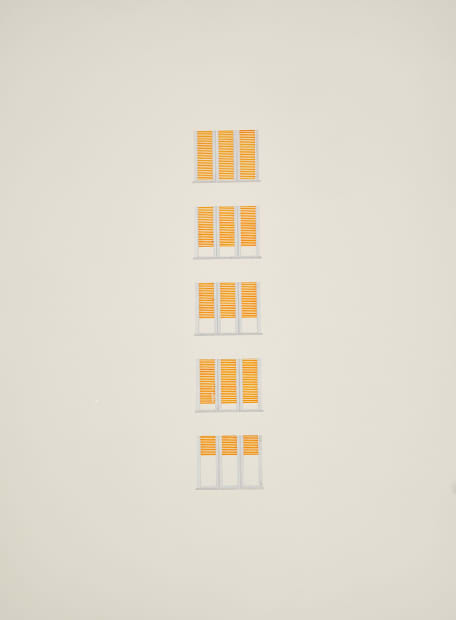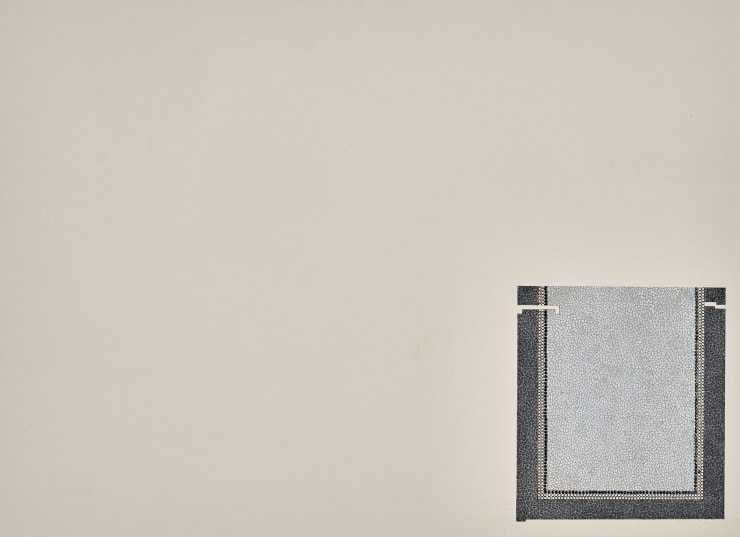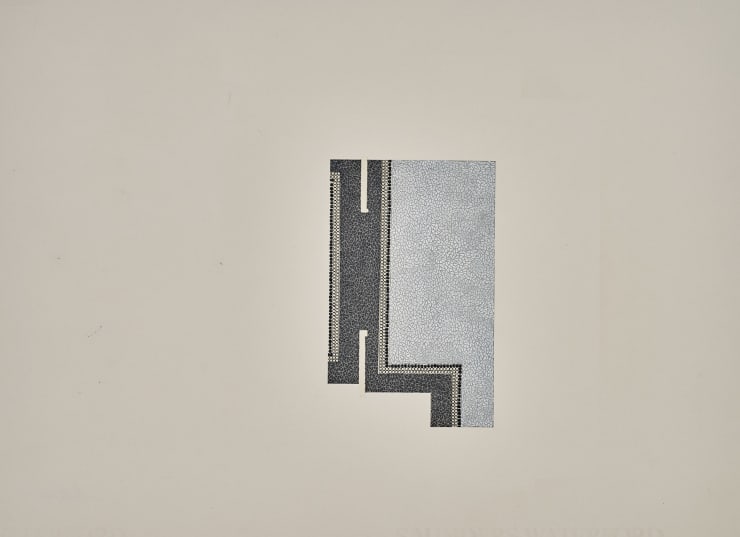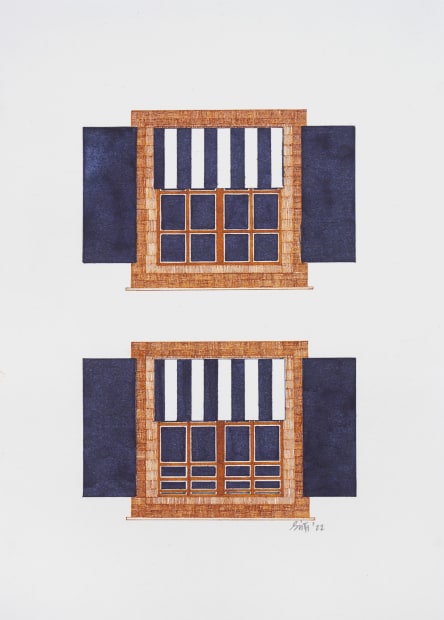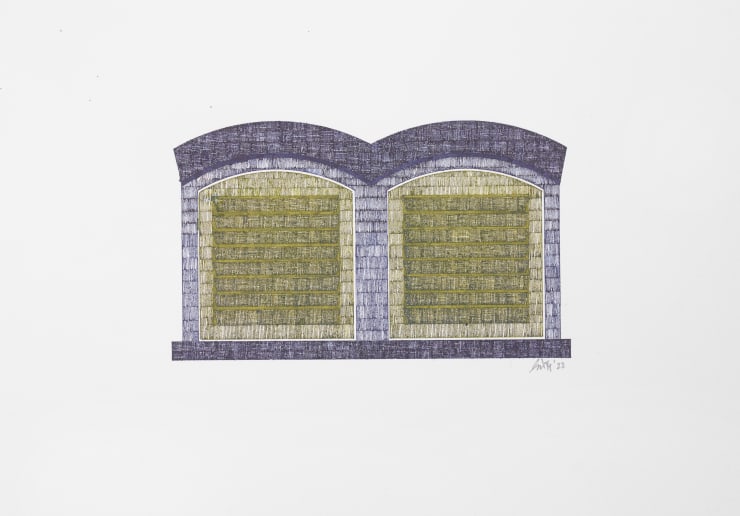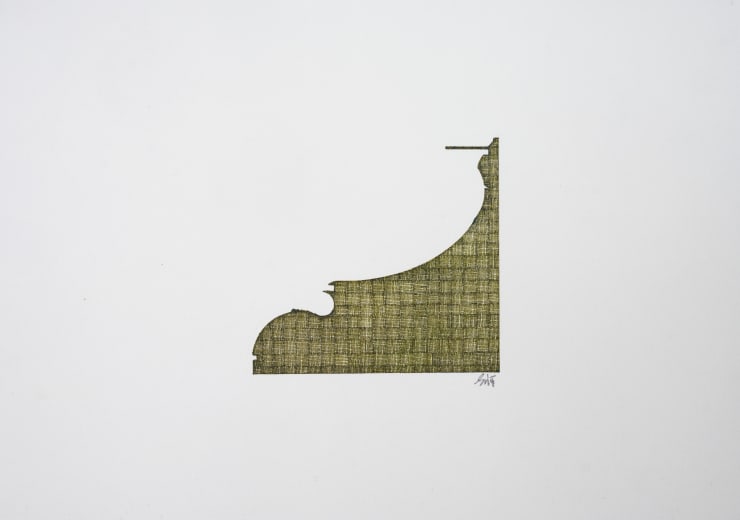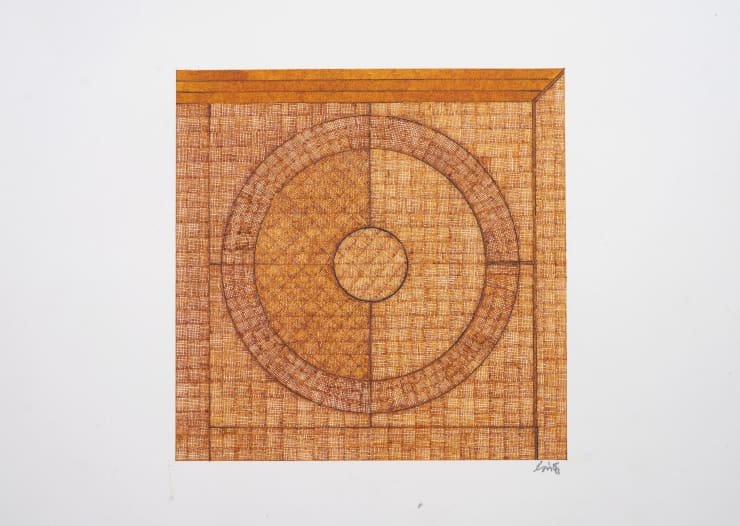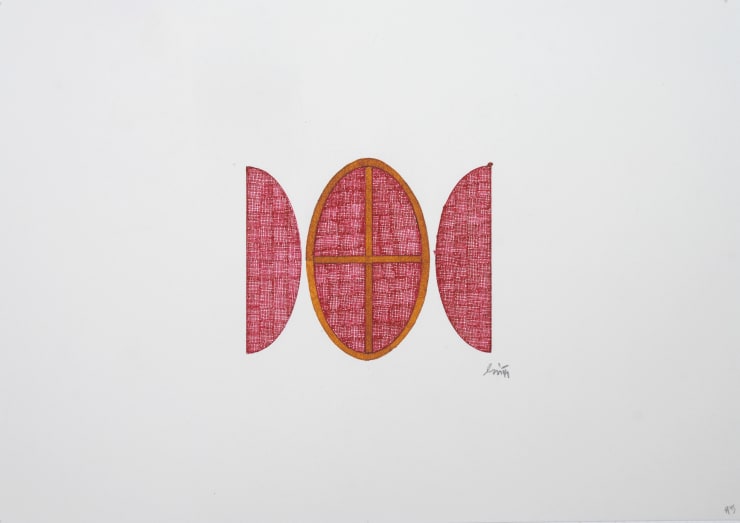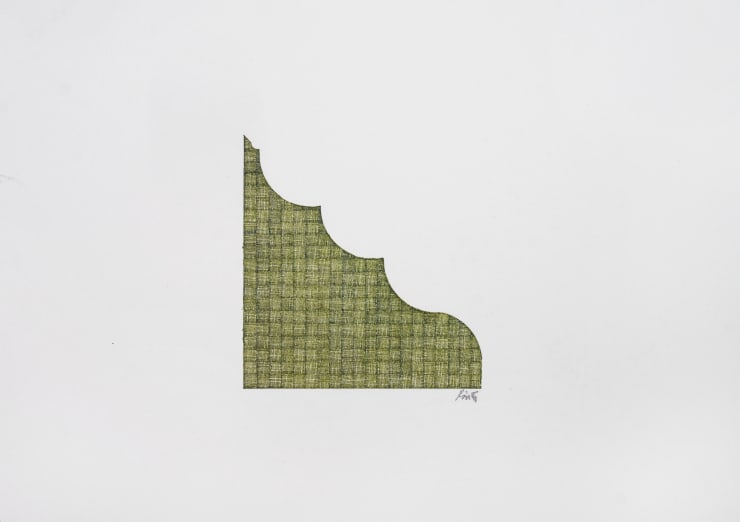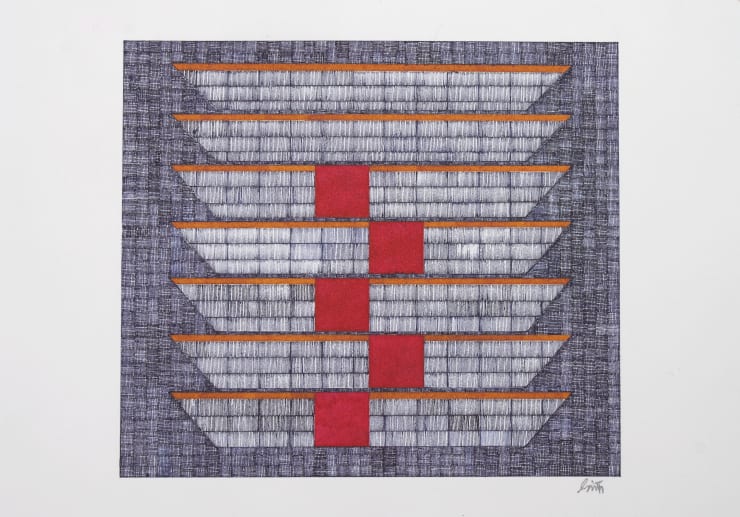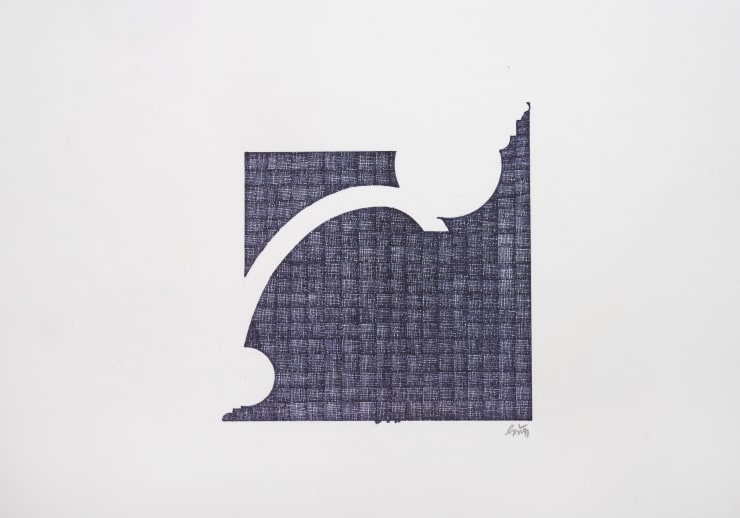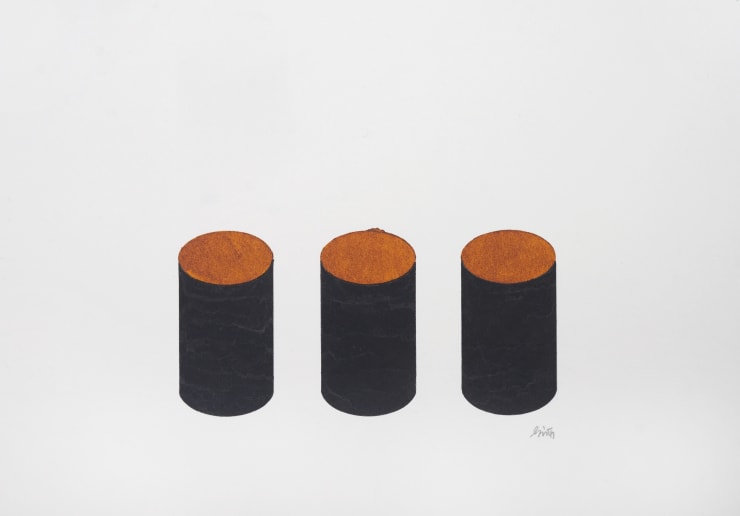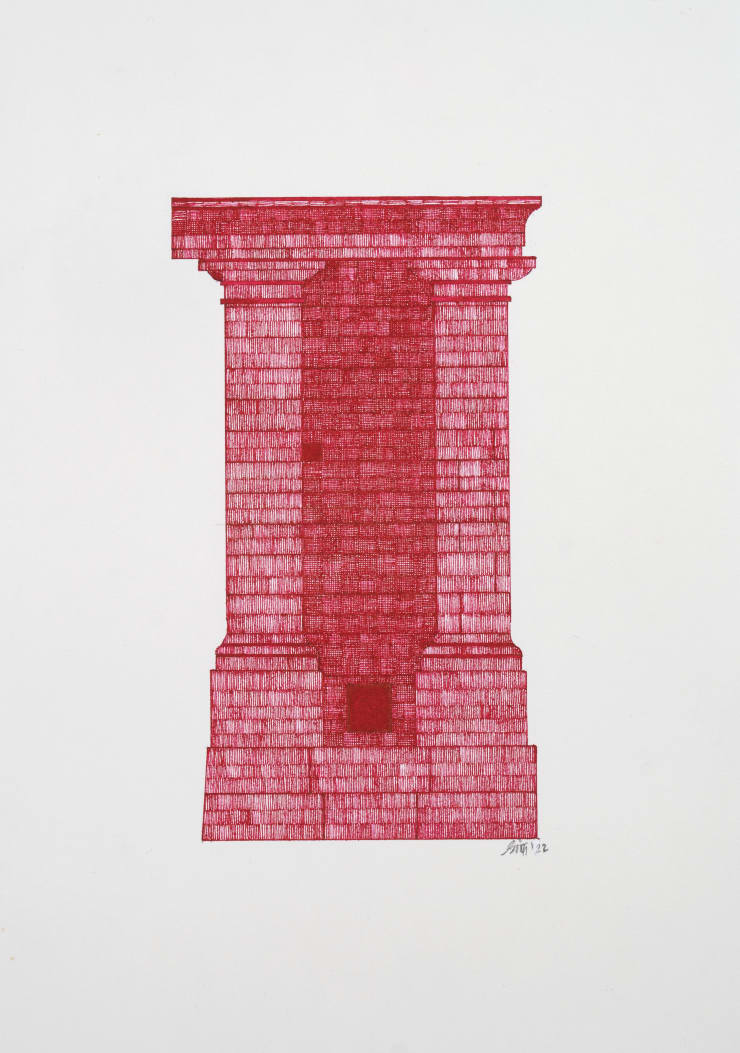-

-
TARQ is delighted to announce Vishwa Shroff’s solo show, The Music of Buildings opening on November 24th. The artworks in this show, mostly made during her stay in Basel, Switzerland, as a guest of the Stiftung Laurenz-Haus, from October 2021 to September 2022, include ink, watercolour, silverpoint and graphite drawings.
Shroff is an urban forager of architectural motifs. She extracts her carefully picked observations from buildings and sites, interior and exterior, and transforms them into minimal yet intriguing drawings. Her works are primarily documentations of her collecting experience, and memory. They serve as a document to a journey that she carries out on foot through the city, and within it, chosen spaces. She acknowledges the ephemeral nature of her movement and presence within these sites, and incorporates it in her drawings in a nuanced, uncanny and striking way. Intrinsic to Shroff’s practice is her process of walking, studying, observing and drafting. Her works obediently mirror the tactile quality of the construction materials being studied.
The accompanying catalogue essay for this exhibition is fittingly written by Hannes Schüepbach, a visual artist and writer Vishwa encountered in Basel, whose precise style of writing is mirrored by Vishwa in her equally precise drawings.Click here to view the exhibition catalogue
-

-
As described by the author of the catalogue essay Hannes Schüpbach, "Memoria Manet, composed of six sheets with tight cuttings of passages leading in to a friend’s home in Basel, speaks of “memory that remains”. A memory that may reside somewhere between the built as an outer form to a life lived and the remote, personal plenitude of such a living, whereby the latter can only be understood by the outsider as a formless correspondent to what is seen. For this piece, the artist chose a “positioning of the drawings that leads to a silence”, as she wrote in her notebook. This ductus is derived from the experience of thought and omission, of articulation and the gap in entails. "
-

-
Vishwa Shroff, Basel Project One, 2022
-
As described by Hannes Schüpbach, "The largest drawing realized after a Basel source to date is Kunstfloor (2022), exploded into four part. The intermittence between these parts introduces a reflection on how spatial perception is composed of partial perceptions over time, especially in the case of an extended floor. This drawing references the top floor hallway of the 1936 Kunstmuseum Basel by Paul Bonatz and Rudolf Christ. The regular plates of slate covering the floor of this vast hallway relate to the visitors’ steps towards entering the galleries with their parquet floors. Each sheet of the composite drawing presents a section of this symmetrical expanse. Vishwa Shroff unobtrusively measured that particular floor with her feet. She thinks of the procedure as an “homage to the steps of the past” and engages in “walking to draw or draw in”. "
-

-
"Beyond their form, Shroff’s spaces remind us of something essential yet not to be taken for granted. A utopia of buildings being conceived for people to live in gracefully, the architect providing a situation that offers proportion and energy. These buildings breathe communality. Their structures, having come from the past, take care of us. This raises a question about how we ourselves will build in the future and for it. Vishwa Shroff’s work speaks of a civilised architecture, and it advocates a rich, spirited living environment, as we all wish it to be. We can take something from these rhythms and melodies to get enthused for a music of buildings and to keep moving wherever we happen to be in a built environment." - Hannes Schüpbach
-
About the Artist
Vishwa Shroff’s artistic practice is firmly rooted in drawing, with a proclivity towards architectural forms that serve as compelling take-off points for a deeper contemplation on memory and our relationship with the material world. Her works seek to explore the narratives of lived experiences that lay embedded within surfaces. She started her artist training at The Faculty of Fine Arts, MSU, Baroda in 1998. She continued on to the Birmingham Institute of Art and Design (UK) in 2003. Her career so far has seen seven solo exhibitions – Folly Measures (2019) curated by Veeranganakumari Solanki at TARQ; In Residence (2018) curated by Rose van Mierlo at Swiss Cottage Gallery, London (UK); Drawn Space (2016) curated by Charlie Levine at TARQ; Postulating Premises (2015) at TARQ; One Eye! Two Eyes! Three Eyes! (2012) at the Acme Project Space, London (UK) and Memories of a Known Place (2012) at Trove Gallery, Birmingham (UK).Vishwa Shroff was part of TARQ’s presentation Building Artefacts at Art Basel Hong Kong (2018) and India Art Fair (2022, 2017). She recently concluded a residency at the Stiftung Laurenz Haus, Basel, Switzerland (2021-2022) and has also participated in residencies like Swiss Cottage Library, London, UK (2017); Paradise Air, Matsudo, Japan (2015); was an international associate artist at ACME studios, London, UK (2011) and A researcher in residence at Tokyo Wonder Site, Japan (2010).Besides participating in artist residencies all over the world, Shroff has also been a part of group exhibitions such as Sublime Transferences at Emami Art in Kolkata (2021); The Show Windows at the Coventry City of Culture Trust in U.K (2021); Looking and Longing, Curating the Domestic at StudioELL in New York (2020); Distilled Blueprints at Space Studio in Vadodara (2019); 100 Years of Bauhaus at Wurttembergisher Kunsverein in Stuttgart, Germany (2018); A Language of Form- Records of Time Tracing with Exhibit 320, Delhi (2020); Bedroom Spaces at Hospital Club, UK (2019) and Camden Draw at Swiss Cottage Library, London (2017).She has engaged in multiple workshops and talk series in the Urban Design and Architecture section of the Kala Ghoda Arts Festival at the Goethe Institut, curated by Kaiwan Mehta at Max Mueller Bhavan (2017); Prototype City as part of the UK City of Culture Program at the British Council, Coventry (2021); Vishwa Shroff: Works at School of Environment and Architecture, Mumbai, India (2019); Varied Perspectives and Practice of the Book at TARQ, Mumbai (2015).Vishwa was a recipient of the 2011 UNESCO Aschberg Bursary for artists and more recently, received the Jusoken Housing Research Grant (Japan, 2020) to study Bombay Art Deco kitchens, along with her long term collaborator Katsushi Goto with whom she has also co-authored a publication titled Duality in Drawing for The International Symposium of Architectural Interchanges in Asia (2016) and has designed the stage layout concept for Guards at Taj (2017), a play directed by Danish Hussein. Shroff is a co-founder of SqW:Lab, an experimental workshop focusing on Drawing and the Domestic based in Mumbai.Vishwa Shroff currently lives and works in Mumbai.
The Music of Buildings: Vishwa Shroff
Current viewing_room

